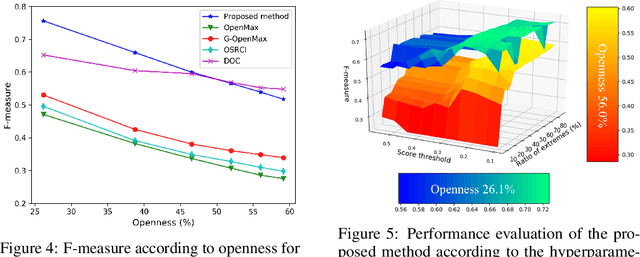One-vs-Rest Network-based Deep Probability Model for Open Set Recognition
Paper and Code
Apr 17, 2020



Unknown examples that are unseen during training often appear in real-world computer vision tasks, and an intelligent self-learning system should be able to differentiate between known and unknown examples. Open set recognition, which addresses this problem, has been studied for approximately a decade. However, conventional open set recognition methods based on deep neural networks (DNNs) lack a foundation for post recognition score analysis. In this paper, we propose a DNN structure in which multiple one-vs-rest sigmoid networks follow a convolutional neural network feature extractor. A one-vs-rest network, which is composed of rectified linear unit activation functions for the hidden layers and a single sigmoid target class output node, can maximize the ability to learn information from nonmatch examples. Furthermore, the network yields a sophisticated nonlinear features-to-output mapping that is explainable in the feature space. By introducing extreme value theory-based calibration techniques, the nonlinear and explainable mapping provides a well-grounded class membership probability models. Our experiments show that one-vs-rest networks can provide more informative hidden representations for unknown examples than the commonly used SoftMax layer. In addition, the proposed probability model outperformed the state-of-the art methods in open set classification scenarios.
 Add to Chrome
Add to Chrome Add to Firefox
Add to Firefox Add to Edge
Add to Edge